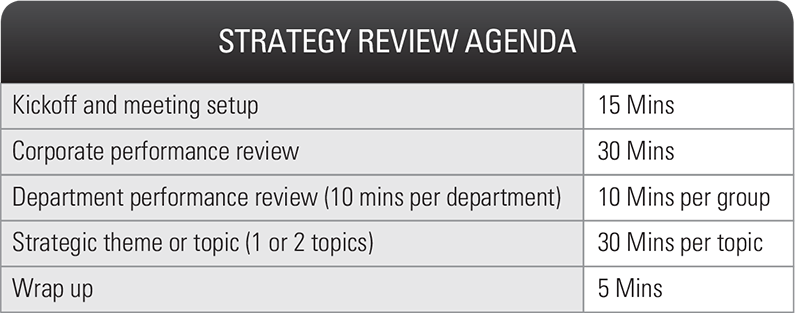After completing part 3 in this newsletter series, you should have a complete plan. With a complete strategic plan, everything should be smooth sailing, right? Well, not always.
One of the hardest parts of strategic planning is putting your plan in place and implementing a process that ensures it’s being executed. It’s one of the places we see organizations most often fail. Having a complete plan is gigantic step in the right direction, but ensuring its ongoing execution is just as important.
To help you stand up an ongoing process to put strategy at the head of your organization, follow these three steps:
Step 1: Establish an Implementation Schedule
Your strategic plan establishes exactly what your team will accomplish to reach your vision. An implementation schedule is designed to help address the who, where, when, and how for your team to execute. Plus, an implementation calendar helps outline the expectations from your team throughout the year. We recommended an annual calendar that includes:
- An articulation of when goal and performance updates are due for your plan
- Scheduled monthly reviews
- Scheduled quarterly reviews
- Dates for your team to hold annual planning sessions at the end of the year
Setting a calendar with the above items and scheduled meetings helps communicate the expectation and priority strategic planning will have during the next year.
Step 2: Create a Standard Strategy Review Agenda
With an implementation calendar in place, you’ll need to create a standard agenda for your organization to use during strategy reviews. It’s important to use the same structure and time to keep your reviews both insightful and productive. Each meeting agenda should also include time to work on one specific topic or quarterly priority where some decisions need to be made.
During this agenda, consider asking the following questions:
- Are we working on the right stuff?
- Are our KPIs moving the needle?
- What strategic topic are we solving right now?
Make these strategy reviews mandatory for your planning team and any other team members who provide insight or are responsible for executing your plan. Making this a mandatory meeting makes strategy execution both a priority and creates visibility into what different functioning teams within your organization are accomplishing. Here is a sample agenda:

Step 3: Review & Adapt
You’ve taken the proper steps to planning and setting a cadence to execution. You’ve now reached the desired end-state for every planning team, so leverage it! Reviewing and adapting your plan is critical to your organization’s success.
As you execute your plan and hold regular strategy reviews, your organization will begin to see what’s working and what isn’t in your plan. If something repeatedly comes up as a barrier in your plan or actions, consider changing it! Even the greatest plans are often adapted to meet reality in execution. It’s perfectly acceptable to take time to tweak your plan and actions if something isn’t working.
However, don’t go reinventing your plan all the time. Changes should be strategic, not just to adapt to your flavor of the month. Your plan is your long-term roadmap to achieving your desired future state, so only change it if it’s really going to make an impact to get you there.
Bonus: Deep Dive into Strategy Review Meetings
If you want to deep dive into what it takes to run a great strategy review meeting, watch our video on “Running a Great Strategy Review.












